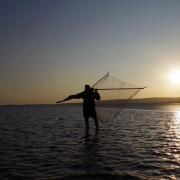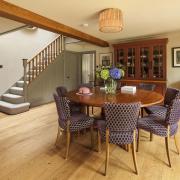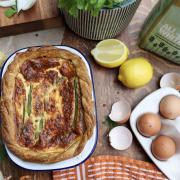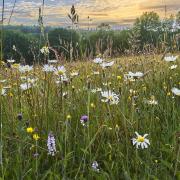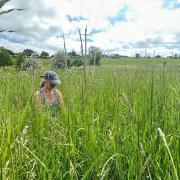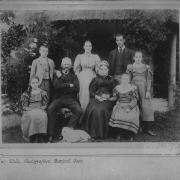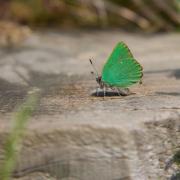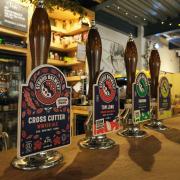An insider's guide to Beaune. home of the world's most famous wine auction. Words by Lucy Jenkins, photography by Alex Thomas
Home to a mere 21,000 inhabitants, the medieval town of Beaune is the wine capital of Burgundy - one of France's top producing regions. Although getting there is slightly awkward (necessitating a TGV [high speed train] from Paris de Gaulle airport), for wine lovers it is their Mecca as thousands of people arrive every year sample the prestigious Cote d'Or (golden slope) wines and to visit the various vineyards on the outskirts of the town.
The winemakers realise that not every visitor will know how to taste wine, or what to look for, so many small wine shops dotted around the cobbled streets and sunny squares of the town offer free tastings (with the general expectation that you'll buy). If your French is not so good, some will talk you through the different appellations and vintage of each wine in English. If you're slightly nervous of being trapped in a shop with a beady eyed shop owner you can visit some of the larger cellars (caves) which for a small entrance fee, will give you a variety of wine to taste direct from the barrels with less pressure for you to buy. One of the best is the rather eerie Reine P�dauque which is covered in cobwebs and dust but houses some 350 different wines which have been gradually ageing for years. For a more in-depth experience, visit some of the vineyards outside of the town and go on guided tours where you'll learn about the region's best red wines, Vosne-Roman�e or Napoleon's personal favourite, Gevrey-Chambertin. Look out for signs saying D�gustation Gratuite (free tastings).
However, if you want to properly immerse yourself in Burgundy's passion for wine then it cannot be recommended enough that you visit the annual wine festival where the world-famous Hospices de Beaune charity wine auction is held on the third Sunday of November. The hospice's main building (known as the Htel-Dieu) was built in 1443 by order of Nicholas Rolin, the Duke's Chancellor who wanted to create a refuge and hospital for Beaune's destitute public who were being terrorised by marauding gangs - remnants of the Hundred Years War. Today, the poor and needy receive help and medical assistance in modern buildings on the outskirts of the town as well as in the nearby villages of Pommard, Mersault and Nolay. The Htel-Dieu is now a museum but its architecture is virtually unspoilt since the 15th century and possesses France's best example of a toit bourguignon, a style of tiled roofing with ornate wrought-iron awnings.
The wine auction itself dates from 1859 and takes place in the auction house, next to the Htel-Dieu. In 2005 Christie's took over the running of the auction and the last auction on November 18, 2007 sold 30 cuv�es (specific blends) of Pinot Noir and 12 of White Chardonnay per barrel of the year's vintage and made a staggering €4.29m for the hospice. Thanks to the excellent soil and temperate weather that are typical to the region; the vineyards owned by the hospice are prestigious appellations and are almost always first growths (known as premier crus - the highest ranking wine of the official classification system).
The bidders can put in their offers through Christie's Live � website (https://www.christies.com/LiveBidding/AboutLiveBidding.asp) but for a first time bidder or visitor it is recommended that you visit the auction and witness the incredibly impact it has on the small town. Public seating in the auction house is limited and so local residents crowd outside the gates anxious to catch a glimpse of the celebrities that are invited to attend (in 2006 the special guest was the famous French actress Fanny Ardant).
Even if you don't bid on your first visit you will still have the opportunity is to sample some of the 41 wines of the auction and to immerse yourself in the ancient traditions of Beaune which accompanies the wine festival. Public tastings are set up on the Saturday and Sunday (the auction is always on a Sunday) mornings in the cellars beneath the Htel-Dieu and in the building itself. Entrance fees are 15 each (just over �11).
After you've carefully rolled the wine around your mouth (noting carefully the bouquet, attack, body, finish and integration) and either swallowed or politely spat in a spittoon, you'll no doubt be ready for some lunch. Beaune is a prosperous, affluent town and there will be no shortage of restaurants and bars dotted around the cobbled streets and sunny squares that will serve hearty meals. There'll also be plenty of market stalls dishing up traditional fare such as frogs legs deep fried with lemon and sea salt should you want something lighter.
Beaune is a fortified town so a walk round the perfectly preserved ramparts is recommended as you'll get stunning views over the steeples and sloping roofs of the town. Beaune has eight surviving bastions and several towers that are great examples of 15th century Burgundian architecture. For those whose interest in wine increased with the tastings, then Beaune has the Burgundy Wine Museum which is open all year round. The entrance fee is around 6 and visitors will learn the history of the wine production in the region from the humble beginnings to the worldwide acclaim it receives today. At the other end of rue d'Enfer - one of Beaune's quieter, lovelier cobbled streets - is the Burgundian Romanesque church of Notre-Dame. Inside are five Tournai tapestries from the 15th century, depicting the life of the Virgin and commissioned by Nicolas Rolin.
In a chamber of the Htel-Dieu hangs a famous 15th century altarpiece The Last Judgement by Rogier van der Weyden who was also commissioned by Rolin.
There are many bars which will stay open fairly late (until midnight) and are cosy, jolly and sell wine at attractive prices. Taxis are not too expensive either, though around the festival they may raise their prices. A good way of countering this is to order a taxi from a restaurant or bar and decide on a price beforehand.
Hotels around Beaune are plenty but can get booked up very quickly so you may find yourself left with only the option of going for the higher end ones. Book in advance and you'll pay around 40 (about �29) per night. If you contact the tourist office (www.ot-beaune.fr) then it'll make reserving accommodation a lot easier than if you try and book it yourself directly with the hotel.
After the weekend of the auction you'll return home with the scents and flavours of Burgundy's wine indelible in your memory. It will be surprising how much you have learnt about wine in such a short amount of time and in restaurants you'll be armed with enough knowledge to make an informed choice. For Beaune, it settles down to become a sleepy, historic town again. Meanwhile, the wines in the dusty cellars are slowly ageing - ready to be thrust in the limelight at the next auction...
Flights to Paris de Gaulle airport are regular and direct from Bristol International Airport ( www.bristolairport.co.uk) TGV timetables to Beaune from Paris de Gaulle can be found on www.tgv.co.uk Dijon and Burgundy's tourist websites are www.dijon-tourism.com and www.burgundy-tourism.com should you want to visit the larger towns nearby. Visit Christie's website https://www.christies.com/auction/calendar/auction_calendar.asp for a calendar of the different events around the year.



